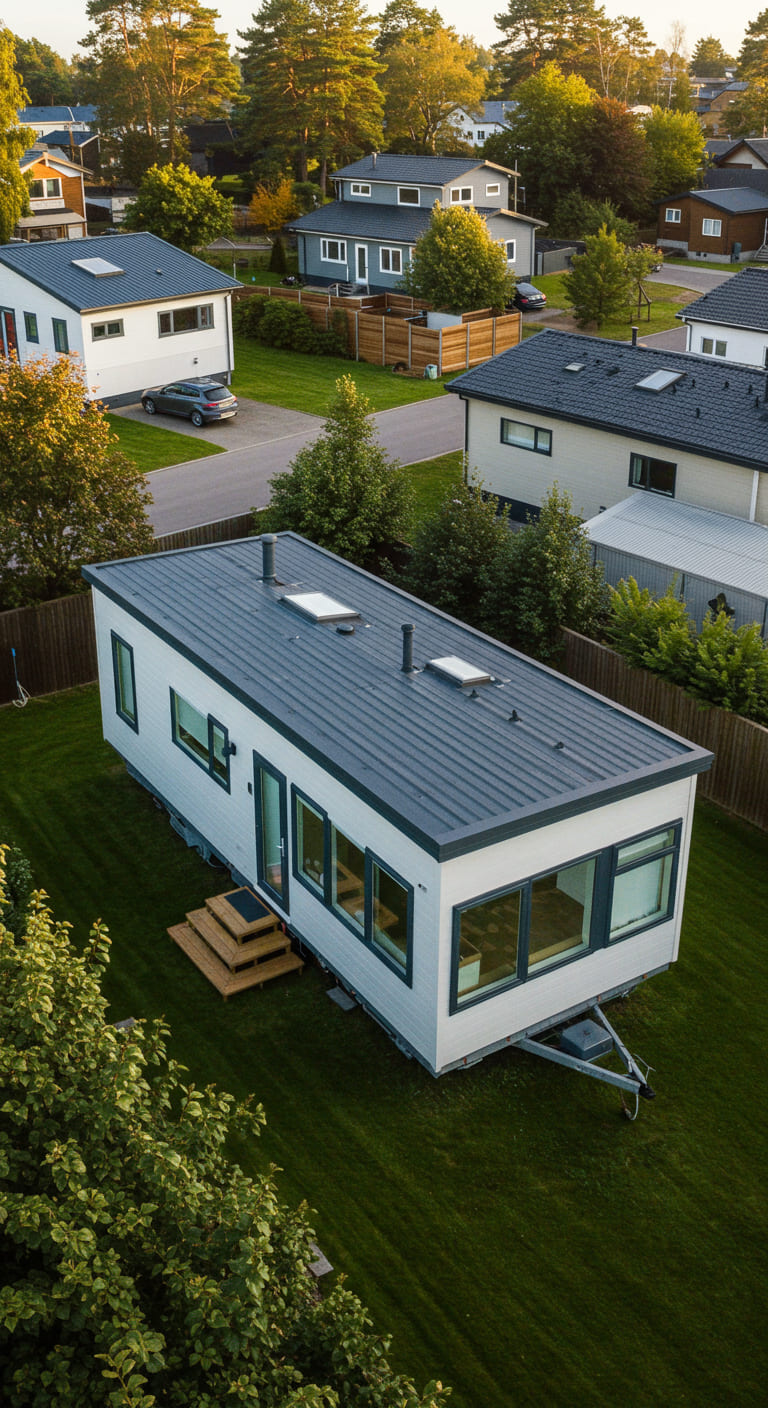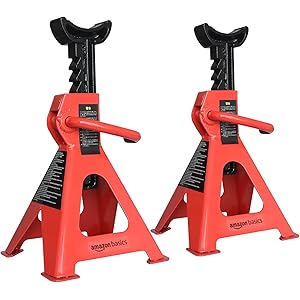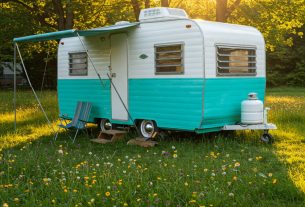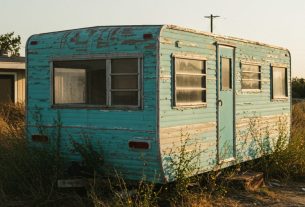As a mobile home owner, I often ponder the intricacies of home insurance and what it means for my unique living situation. Having navigated the sometimes murky waters of mobile home insurance, I’ve come to understand that several factors can render a mobile home uninsurable. In this article, I will share my insights and experiences, discuss the key factors that can lead to uninsurability, and offer guidance for anyone facing similar challenges.
Understanding Mobile Home Insurance
Before we dive into the factors that make a mobile home uninsurable, it’s crucial to grasp the basics of mobile home insurance. A mobile home insurance policy typically covers:
- Property damage to the home itself
- Liability protection in case someone gets injured on your property
- Additional living expenses if you need to relocate while repairs are made
However, unlike traditional homes, mobile homes often face unique challenges regarding insurance coverage. This can be attributed to their construction, location, and other factors. Let’s explore what can make a mobile home uninsurable.
Key Factors That Make a Mobile Home Uninsurable
Throughout my experience, I’ve identified several critical factors that can lead to a mobile home being deemed uninsurable. Understanding these factors can help you take proactive measures to safeguard your investment.
1. Age of the Mobile Home
One of the most significant factors affecting insurability is the age of your mobile home. Insurance companies often have strict guidelines regarding the age of the home they are willing to insure. Here are some considerations:
- Homes older than 10-15 years are frequently deemed high-risk.
- Older models may lack modern safety features, making them less attractive to insurers.
- Many insurers may not cover homes built before 1976 due to outdated construction standards.
2. Condition of the Mobile Home
The physical condition of your mobile home plays a pivotal role in its insurability. A home that shows signs of significant wear and tear is likely to be viewed with skepticism by insurance providers. Key indicators include:
- Visible structural damages such as cracks, leaks, or sagging roofs.
- Outdated plumbing or electrical systems that pose safety risks.
- Neglected maintenance that leads to infestations or deterioration.
3. Location and Risk Factors
Where you live can significantly impact your mobile home’s insurability. Certain locations are deemed higher risk due to environmental factors. Consider the following:
- Areas prone to natural disasters such as floods, hurricanes, or wildfires.
- Proximity to high-crime neighborhoods can increase liability risks.
- Mobile homes located in flood zones may face additional scrutiny from insurers.
4. Lack of Permanent Foundation
Mobile homes that are not affixed to a permanent foundation can be problematic for insurance companies. Here’s why:
- Homes on wheels are often considered temporary structures, raising concerns about stability.
- A permanent foundation provides added security against shifting and settling.
- Many insurers require a foundation for coverage eligibility.
5. Title Status and Classification
The classification of your mobile home can also affect its insurability. If your home is classified as personal property rather than real estate, you may face challenges in securing coverage. Factors include:
- Homes not affixed to land may be considered personal property.
- Titles that remain in the name of a manufacturer can complicate insurance applications.
- States have different laws regarding mobile home classification, impacting your options.
6. Insurance Claims History
Your history of insurance claims can make or break your chances of obtaining coverage. Insurers typically view a high frequency of claims as a red flag. Consider these points:
- Multiple claims can indicate higher risk and may lead to denial of coverage.
- Insurance companies often share claims history, affecting your future applications.
- Even if past claims were minor, they can still impact your insurability.
Case Studies: Real-Life Experiences
To further illustrate these points, let me share a couple of real-life experiences that underscore the factors we’ve discussed.
Case Study 1: The Aging Mobile Home
My friend Sarah bought a mobile home built in 1985, excited to embrace a minimalist lifestyle. However, when she attempted to secure insurance, she was met with roadblocks. The insurer cited the home’s age as a primary reason for denial, referencing outdated safety standards and a lack of modern amenities. Sarah learned the hard way that investing in a newer model could have spared her this hassle.
Case Study 2: Location Dilemma
Another friend, Mike, purchased a mobile home in an area known for severe storms. Despite being in excellent condition, his home was deemed uninsurable due to its high-risk location. Mike quickly realized that researching the natural disaster history of a location could have saved him from this predicament.
Steps to Secure Mobile Home Insurance
If you find yourself facing insurability challenges, don’t despair. There are steps you can take to increase your chances of securing insurance for your mobile home:
1. Improve the Condition of Your Home
Investing in renovations and repairs can make a significant difference. Focus on:
- Addressing structural issues and ensuring all systems are up to code.
- Regular maintenance to keep your home in top shape.
- Upgrading safety features, such as smoke detectors and fire extinguishers.
2. Secure a Permanent Foundation
If your mobile home isn’t on a permanent foundation, consider investing in one. This change can help you meet insurance requirements and improve your home’s overall stability.
3. Research Insurance Providers
Not all insurance companies have the same policies regarding mobile homes. Research and compare different providers to find one that aligns with your needs. Look for:
- Companies specializing in mobile home insurance.
- Positive reviews from other mobile home owners.
- Flexible policy options that cater to older homes.
4. Understand Your Home’s Classification
Consult with local authorities to understand how your home is classified. If it’s deemed personal property, consider the steps needed to change its classification to real estate.
5. Build a Positive Claims History
Maintain a low claims history by addressing minor issues before they escalate. If you do need to file a claim, ensure it’s necessary and well-documented.
Conclusion
Navigating the world of mobile home insurance can be daunting, especially when faced with the possibility of uninsurability. As I’ve shared, various factors can contribute to this situation, including the home’s age, condition, location, foundation status, title classification, and claims history. By being proactive and taking steps to improve your mobile home’s insurability, you can protect your investment and enjoy the peace of mind that comes with having adequate coverage.
Remember to research thoroughly, seek out insurance providers that understand mobile home needs, and maintain your home in good condition. I encourage you to share your experiences or ask questions in the comments below. Let’s create a supportive community of mobile homeowners who can help one another navigate these challenges.
Frequently Asked Questions
1. Can I insure an older mobile home?
Yes, but it may require special insurance providers who focus on insuring older mobile homes and may come with higher premiums.
2. What should I do if my mobile home is uninsurable?
Consider making improvements, such as repairs and securing a permanent foundation. Research insurance companies that specialize in mobile homes.
3. Does location really affect mobile home insurance?
Absolutely! Areas prone to natural disasters or high crime rates may lead to higher premiums or denial of coverage.
Thank you for reading! If you found this article helpful, please consider signing up for our newsletter for more insights and tips. Share this article with your friends and on social media to help spread the knowledge!
Amazon Basics Steel Jack Auto Stands with 6,000 lb or 3 Ton (2.7 metric Ton) Capacity, 1 Pair, Black and Red
$29.99 (as of October 25, 2025 07:31 GMT -03:00 - More infoProduct prices and availability are accurate as of the date/time indicated and are subject to change. Any price and availability information displayed on [relevant Amazon Site(s), as applicable] at the time of purchase will apply to the purchase of this product.)
Sign up for our newsletter and stay up to date with exclusive news
that can transform your routine!





